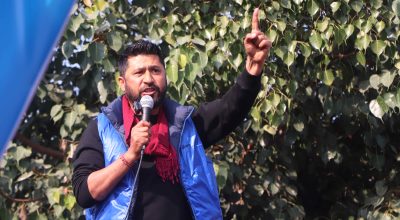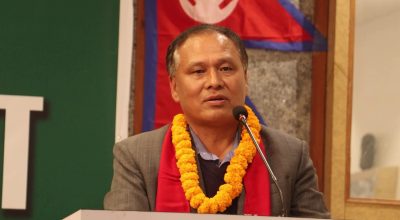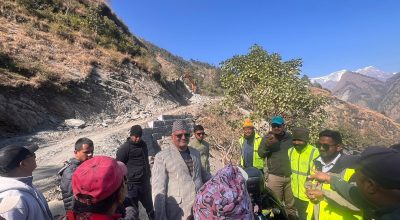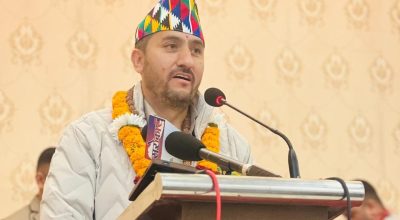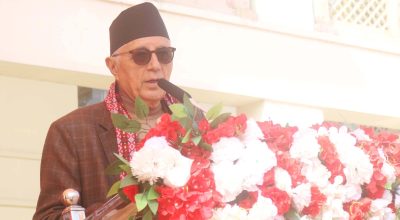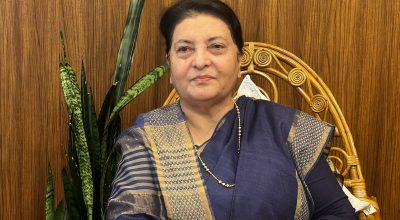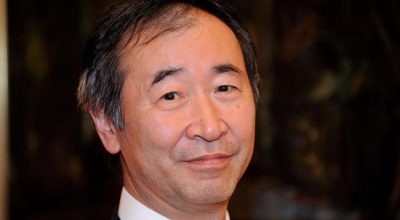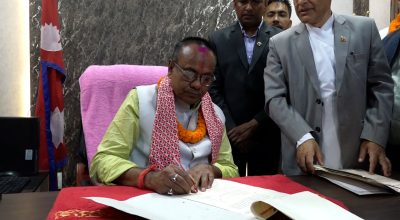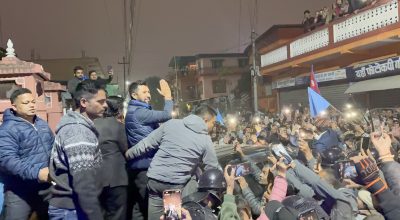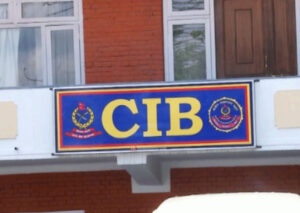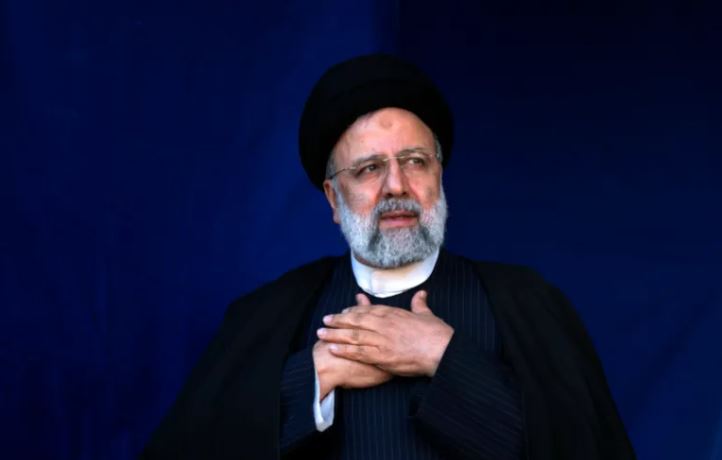
Abbas Milani
STANFORD – Iranian President Ebrahim Raisi, who died in a helicopter crash on May 19, was an insubstantial man in an insignificant job. Absolute power in Iran rests not with the president but with Supreme Leader Ali Khamenei and the Iranian Revolutionary Guard Corps, the pretorian force that controls, indeed embodies, the Islamic regime’s repressive apparatus. The IRGC is also an economic juggernaut that controls the commanding heights of the country’s economy.
Aside from being inept, Raisi was notorious for his role in the summary executions of more than 4,000 political prisoners in 1988. A few years ago, when there was some open discussion of this infamous episode in Iran, Raisi had the temerity to suggest that he deserved a human-rights award for cleansing the world of the corrupting influence of those he condemned to die. And a prominent speaker at Raisi’s funeral “promised” that his murderous “work of the 1980s” will continue unabated.
Less than three years ago, Raisi was nominally “elected” to the presidency in the most engineered election in the Islamic Republic’s history of engineered elections. By eliminating all other remotely viable candidates, Khamenei all but appointed Raisi to the position.
Iran’s presidency is a hollow office, save for its proximity to Khamenei’s throne. That matters, because the specter of succession has been haunting Iranian politics ever since the octogenarian Khamenei was diagnosed with cancer. Guessing whose path to succeeding Khamenei is being paved in an election, and which troublesome competitor is being eliminated, has become a parlor game of sorts in Iran.
In view of Raisi’s rise from a minor, if murderous, judge to the head of the judiciary and then the presidency, many assumed that he was being groomed as the next Supreme Leader. Now that Raisi is dead, some talk of a succession crisis. In fact, his death has triggered a full-blown crisis of legitimacy for the regime.
Given Khamenei’s grandiose image of his own intellectual brilliance and his belief that he is God’s voice on Earth (once even suggesting that a sermon of his was in fact Allah’s), and given Raisi’s notoriously feeble intellect, it is hard to believe that Raisi was ever a contender, at least in Khamenei’s self-affirming vision. Despite overwhelming evidence that Khamenei’s chosen successor is one of his sons – the mysterious Mojtaba, who has long lurked in the shadows – some pundits in the West point to Khamenei’s aversion to hereditary rule as evidence that he does not want his son to succeed him.
But such an assumption flies in the face of Khamenei’s behavior and Shia dogma. Khamenei, who by fiat or law offers views on virtually every facet of politics and policy, culture and literature, and whose words are declared by his supporters to be Fasl-il-Khitab – “the end of discussion” – could simply declare that his son is not a candidate to succeed him. He has done no such thing. Moreover, Reuters reports that “sources familiar with the matter” said that the Assembly of Experts, a deliberative body that oversees the Supreme Leader, eliminated Raisi’s name from the candidate pool six months ago.
Likewise, it is a central tenet of the Shia faith that the Prophet Muhammad had anointed his son-in-law, Ali, as his successor, and that the male direct descendants of the same Ali are, as Imams, the sole legitimate rulers of the Shia faithful. Khamenei’s own ascent to the role of Supreme Leader followed the same tradition. While he obviously lacked any of the constitutional qualifications for the role, he was declared the successor to Ayatollah Ruhollah Khomeini, the regime’s founder, on the flimsy claim by then President Ali Akbar Hashemi Rafsanjani – the second most powerful man after the recently deceased Khomeini – that someone had heard Khomeini say that Khamenei was his worthy successor.
At the time, Iran’s constitution stipulated that the Supreme Leader must be the leading ayatollah of the Shia world. Khamenei was but a minor cleric. Eventually, after appointing him to the position, the constitution was amended to fit Khamenei’s meager qualifications. Gradually, Khamenei, to the consternation of some of the more senior ayatollahs, assumed the mantle of an ayatollah. But Khamenei is no prophet, nor is today’s Iran akin to the Arab society of 1,400 years ago, and thus there is no guarantee that Khamenei can realize his plan, or, even if he does, that Mojtaba can navigate the crippled ship of state to stability.
The crisis of legitimacy pervades a large and growing segment of Iranian society. The Women, Life, Freedom protest movement is the most recent manifestation of resistance to what many Iranians believe is a corrupt, anachronistic, incompetent, misogynistic, and despotic regime. Reliable polls – some conducted by the regime, and others by the Netherlands-based GAMAAN – indicate that less than 20% of the population want the status quo to continue.
A more pointed indicator of this legitimacy crisis was that, despite the regime’s claims, few Iranians – inside and outside the country – truly mourn Raisi’s death. While large numbers of people in Iran, on social media, and in the diaspora celebratedRaisi’s death, others regretted that he did not live long enough to be tried for his crimes, and still others pointed to the regime’s inability to protect its key operatives.
Another sign of the regime’s internal crisis is that none of Iran’s three living ex-presidents was allowed to participate in the funeral. Even more remarkable is that all past presidents, except Khamenei (who was president under Khomeini) have either died in exile, been assassinated, or died under suspicious circumstances. Those still alive have been shunned as a virtual enemy of the state.
Meanwhile, the country continues to suffer from double-digit inflation and high unemployment rates; the value of its currency is plummeting; and educated elites, capital, and a large number of trained laborers are leaving the country. Much of the international community, either uninformed about Iran or, more likely, betting on the short-term gains of accommodating the regime by adhering to diplomatic decorum, has offered condolences for the passing of a man whom Ayatollah Montazeri, until 1988 the designated successor to Khomeini, called a “criminal.”
The regime is doubling down on despotism and issuing ominous warnings about its ability to produce a nuclear bomb. Once Khamenei leaves the scene, the IRGC will be the ultimate power broker, and Mojtaba is probably their preferred Supreme Leader.
Ironically, some of Mojtaba’s advocates, evidently aware of the nature of the crisis, are suggesting that he will be a reformer akin to Saudi Crown Prince Mohammed bin Salman, willing and able to pull the country back from the edge of the abyss. While that is unlikely, Iranian women’s resilience in their fight for democracy is a ray of light. In the short term, though, instability seems inevitable, and, as usual, whatever happens in Iran will not stay there.
Abbas Milani is Director of the Iranian Studies Program at Stanford University and a research fellow at the Hoover Institution.
Copyright: Project Syndicate, 2024.
www.project-syndicate.org





